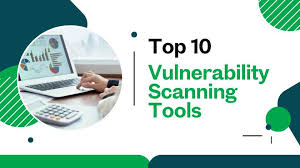Top 10 Vulnerability Assessment Tools 2025
In today’s digital landscape, cybersecurity is no longer optional—it’s a necessity. With cyberattacks becoming more sophisticated, businesses must proactively identify and address vulnerabilities in their systems. Vulnerability assessment tools are critical for this purpose, helping organizations detect weaknesses, prioritize risks, and implement effective remediation strategies.
In this blog, we’ll explore the top 10 vulnerability assessment tools, their key features, pricing, discounts, and the pros and cons of each. Whether you’re a small business or a large enterprise, this guide will help you choose the right tool to secure your infrastructure.
What is a Vulnerability Assessment Tool?
A vulnerability assessment tool is a software solution designed to scan, identify, and analyze security vulnerabilities in networks, applications, and systems. These tools provide detailed reports and recommendations to help organizations mitigate risks and comply with industry standards like GDPR, HIPAA, and PCI-DSS.
Top 10 Vulnerability Assessment Tools
1. Nessus Professional
- Features:
- Comprehensive vulnerability scanning
- Compliance checks (e.g., PCI-DSS, HIPAA)
- Malware detection and configuration auditing
- Price: Starts at $3,390/year for a single license.
- Discount: Free trial available; discounts EXTRA 10% Use Code Tenable10 OFF yearly subscriptions.
- Why It’s Best: Nessus is known for its accuracy and extensive plugin library.
- Pros: Highly reliable, excellent reporting, and frequent updates.
- Cons: Expensive for small businesses; requires technical expertise.
2. Qualys Vulnerability Management
- Features:
- Cloud-based scanning and continuous monitoring
- Asset tagging and compliance reporting
- Price: Custom pricing based on the number of assets.
- Discount: Free trial available; volume discounts for enterprises.
- Why It’s Best: Qualys is scalable and integrates seamlessly with other tools.
- Pros: User-friendly, robust reporting, and excellent support.
- Cons: Can be costly for small teams; limited offline functionality.
3. OpenVAS
- Features:
- Open-source vulnerability scanning
- Network vulnerability tests and detailed reporting
- Price: Free.
- Discount: N/A (open-source).
- Why It’s Best: OpenVAS is a cost-effective solution for businesses with limited budgets.
- Pros: Highly customizable, community-supported, and free to use.
- Cons: Requires technical expertise; less user-friendly than paid tools.
4. Rapid7 InsightVM
- Features:
- Real-time risk analytics and asset discovery
- Integration with SIEM tools
- Price: Starts at $2.50/asset/month (minimum 100 assets).
- Discount: Free trial available; discounts for annual subscriptions.
- Why It’s Best: InsightVM offers excellent visualization and prioritization of risks.
- Pros: Intuitive interface, strong support, and actionable insights.
- Cons: Pricing can escalate quickly for large environments.
5. Tenable.io
- Features:
- Cloud-based vulnerability management
- Container security and compliance monitoring
- Price: Custom pricing based on assets and features.
- Discount: Free trial available; discounts for long-term commitments Extra 10% Off Use Code SAVE10
- Why It’s Best: Tenable.io provides comprehensive coverage for modern IT environments.
- Pros: Easy to deploy, excellent support, and scalable.
- Cons: Expensive for small businesses; complex pricing structure.
6. Acunetix
- Features:
- Web application and network vulnerability scanning
- Compliance reporting
- Price: Starts at $4,995/year for a single license.
- Discount: Free trial available; discounts for multi-year plans.
- Why It’s Best: Acunetix is a leader in web application security.
- Pros: Fast scanning, detailed reports, and excellent for web apps.
- Cons: Expensive; limited to web and network vulnerabilities.
7. Nexpose (Rapid7)
- Features:
- On-premise and cloud-based scanning
- Risk scoring and remediation tracking
- Price: Custom pricing based on the number of assets.
- Discount: Free trial available; discounts for annual subscriptions.
- Why It’s Best: Nexpose excels in risk prioritization and integration.
- Pros: Strong reporting, easy integration, and robust features.
- Cons: Resource-intensive; pricing is not transparent.
8. GFI LanGuard
- Features:
- Patch management and network auditing
- Vulnerability scanning
- Price: Starts at $1,299/year for 25 nodes.
- Discount: Free trial available; discounts for larger deployments.
- Why It’s Best: GFI LanGuard combines patching with vulnerability scanning.
- Pros: Affordable, easy to use, and great for small businesses.
- Cons: Limited advanced features; reporting could be better.
9. SolarWinds Network Configuration Manager (NCM)
- Features:
- Network vulnerability scanning
- Configuration management and compliance reporting
- Price: Starts at $2,995/year for 100 nodes.
- Discount: Free trial available; discounts for annual subscriptions.
- Why It’s Best: Ideal for network-focused environments.
- Pros: Easy to deploy, strong compliance features, and scalable.
- Cons: Limited to network vulnerabilities; not ideal for web apps.
10. Intruder
- Features:
- Cloud-based vulnerability scanning
- Continuous monitoring and API integration
- Price: Starts at $97/month for the Essential plan.
- Discount: Free trial available; discounts for annual billing.
- Why It’s Best: Intruder is affordable and easy to use for small to medium businesses.
- Pros: Cost-effective, user-friendly, and excellent for SMBs.
- Cons: Limited advanced features; not suitable for large enterprises.
Why Vulnerability Assessment Tools Are Essential
- Proactive Risk Management: Identify vulnerabilities before they are exploited.
- Compliance: Meet regulatory requirements like GDPR, HIPAA, and PCI-DSS.
- Cost Savings: Prevent costly data breaches and downtime.
- Improved Security Posture: Strengthen your overall cybersecurity defenses.
Pros and Cons of Vulnerability Assessment Tools
| Pros | Cons |
|---|---|
| Identify security gaps before exploitation | Can be expensive for small businesses |
| Improve compliance with industry standards | May require technical expertise |
| Provide actionable insights for remediation | Some tools are resource-intensive |
| Enhance overall security posture | Limited to known vulnerabilities |
Final Thoughts
Choosing the right vulnerability assessment tool depends on your organization’s size, budget, and technical expertise. For enterprises, tools like Nessus and Qualys offer comprehensive features and scalability. For small businesses, affordable options like Intruder and OpenVAS are excellent choices.
Take advantage of free trials and discounts to evaluate the tools that best fit your needs. Remember, investing in a vulnerability assessment tool is an investment in your organization’s security and future.
Stay safe, stay secure!

